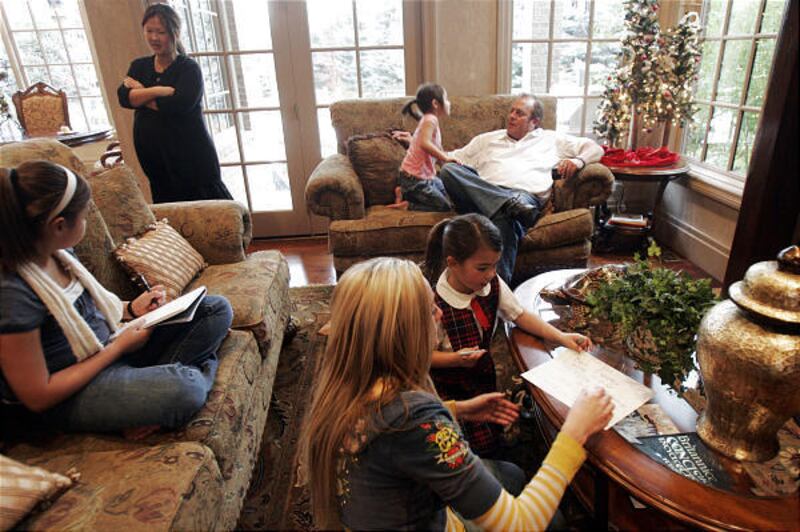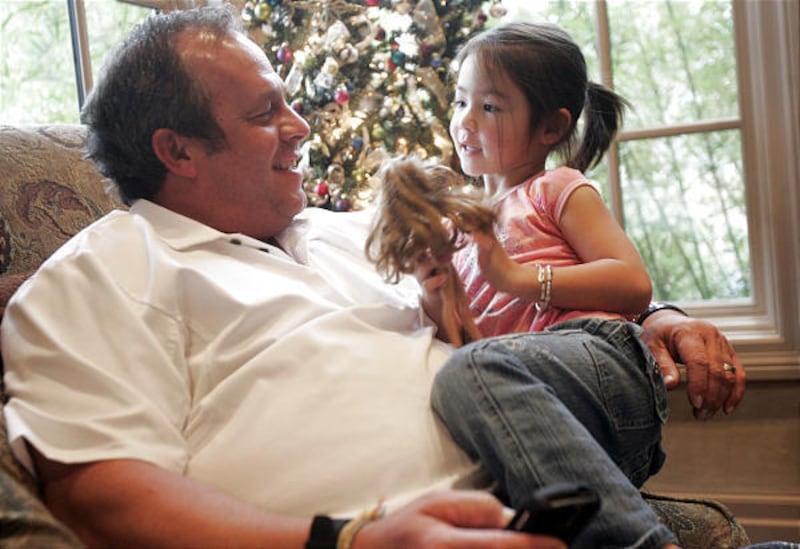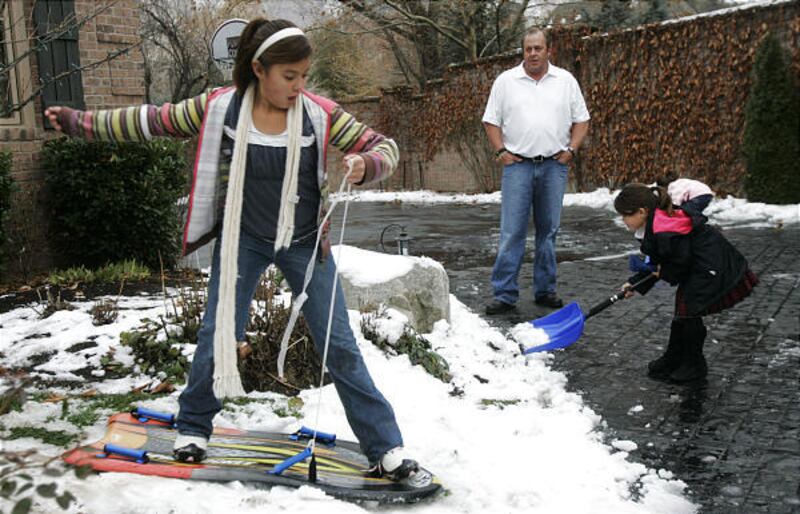At 47, Steve Brunken has it good.
He's retiring in the next few months from a successful insurance business, playing new dad to a baby girl born Jan. 5 and doting on his three young daughters and beautiful wife, Cathy.
What a casual observer won't see, however, is the decades of drug use, criminal records and the daily battle against addiction.
It seems hard to believe, glancing over his exquisitely decorated Holladay home, with its vaulted ceilings and plush carpets.
He's been blessed, he insists. And now it's his turn to give back.
"There are a lot of things that occur in life when you're a drug addict that are hurtful and painful," he said, choking up. "It's a great gift not to be in that turmoil. I'm grateful for the freedom I have today, but for me, that comes with great personal obligations."
He wipes away the tears rolling down his face. He's finally come to grips with his tender heart and loving nature. Now, instead of trying to hide it through drug use, he will harness it and serve people.
Serving and sharing
Brunken wants to devote his life to spreading the message of sobriety, starting by volunteering at The Ark of Little Cottonwood, where he found healing, and speaking to anyone he can about addiction.
He wants people to know how easy it is to become a victim and how hard it is to get out.
"The fact of the matter is, we all work with somebody in recovery, or we work with somebody who's actively using," said Dr. H. Westley Clark, the director of the U.S. Center for Substance Abuse Treatment. "The key issue for America is, if we don't de-stigmatize the recovery process, then we keep it in the closet."
But Brunken was initially worried about telling his story to teenagers. Would it send a mixed message? Yes, he had a rough few years, but pulling up to his gated cul-de-sac, visitors can tell he's done well. Would teens think drugs aren't that bad, that it will all work out in the end?
No, they won't think that, others told him. Your story is too important. Talk about your journey, your mistakes and your triumphs. Tell them they don't ever have to start.
But if they have, tell them they are not alone.
In Utah, more than 95,000 people need substance abuse treatment, according to the Utah Division of Substance Abuse and Mental Health 2007 annual report. However, only 17 percent actually get help.
These addicts are our neighbors, our brothers, our moms, our co-workers. They are in our communities, our churches and our families. And they need our help, Brunken said.
"Substance abuse is a part of every Utah neighborhood," said Casey Hill, executive director of Utah Support Advocates for Recovery Awareness. "The difference is, people who are in (treatment) facilities are ... actually trying to find recovery (while) your next-door neighbors are still struggling."
Recovery next door
Many Utahns quickly agree that substance abuse treatment is necessary.
But not in my community, they say. Put the programs and those who need them somewhere else.
"It's a very tender subject," said Joi Pearson, an Orem resident who lives near a female sober-living home, which recently became licensed as a residential transitional care facility. "Even for people who realize the need for these places, having them live next door to you is a different question."
"There are lots of ways to allow these homes to be in existence and do well, but there are so many more protections they could put in place for the neighbors that haven't been done yet," Pearson continued. "The question is, what can (cities) do?"
Cities must comply with the Fair Housing Act, which requires that those with disabilities — including recovering addicts — be given the same housing opportunities as anyone else.
Orem allows sober-living homes or residential transitional care centers to house more people than the normal allowed number of unrelated occupants, so endeavors can be "economically viable and therapeutically effective," said Steve Earl, an Orem City attorney.
That discrepancy is difficult for some residents, said Orem City councilman Mark Seastrand.
"Usually the neighbor's concerns come from ... lots of people in a single home and a fairly high degree of turnover (bringing) an increase of traffic, increase of visitors," Seastrand said. "The issues that any typical neighborhood would be concerned about."
And they are. The home Pearson worries about is in the middle of a stable cul-de-sac.
"It doesn't look any different than any of our other homes in the neighborhood," said another neighbor, Kristin Bryce. "Our only concern is that we just don't know who's there."
The concern lessened after neighbors met the clients at a July Fourth barbecue.
"They're not scary people, they're real people," Bryce said. "We've all been touched by alcoholism and drug abuse in our families so we have compassion for them. We want them to get the help they need to be better, to be clean."
Neighbors said much of their frustration came when the homeowners, who had lived there for nearly a year as a family, changed the home to a sober-living home without telling anyone.
"Are there ... bad experiences (with sober-living homes)?" Brunken asked. "Probably. But I don't know how to change someone's mind unless they can live with me, be a part of my life. Get to know us. People in recovery are as good as it's gonna get. In order for a person to maintain recovery, they have to live an honest, productive, good life."
In response to the neighbors' concerns, Orem imposed a few more rules, requiring frequent reporting to city officials, immediate dismissal for relapses and a 60-day clean period before re-admittance.
It's a delicate dance between being restrictive enough to appease worried neighbors and being too strict so as to violate the FHA. Orem is still reviewing the issue, Seastrand said.
Neighbor Kerri Olsen doesn't particularly like living next door to the sober-living home, but after seeing friends addicted to drugs, she knows treatment is needed.
She'd prefer less traffic, a few more rules and some type of non-invasive reporting about who is moving in and out. And of course, there's always the concern about falling property values.
"I've come to a realization that this is how it's going to be," Olsen said. "So if it is, let's tighten the rules and make sure no one's hurt over it, and that these girls are getting what they need, because they're human and we all make mistakes."
Moving beyond fear
"I want these girls to succeed, and we all do, but a lot of people were so scared," Bryce said. "Usually you think of a drug person as someone with long hair, mangy. (But) they're just like you and me."
That's Brunken. He actively participates in his church, goes on walks with Cathy, plays with his four little girls and occasionally cruises through the canyons on his motorcycle.
The only difference, perhaps, is his weekly attendance of aftercare classes at The Ark.
Despite his years of staying sober, he is still a recovering addict.
When someone learns of his past, the conversation quickly turns to connections. "My dad ... " they'll say. Or, "my niece ... " Everyone is touched by addiction, Brunken says.
Once the fear is gone, people quickly see that despite different, individual struggles, everyone's goals are the same: a loving family and a happy, successful life.
That's what Brunken wants to share.
He wants people to see that those snared by addiction are good people. Good people who are lost. But they can be found. And brought back.
Just as he was.
"Give people a chance," he said. "It's so freeing to be kind to each other."
E-mail: sisraelsen@desnews.com




